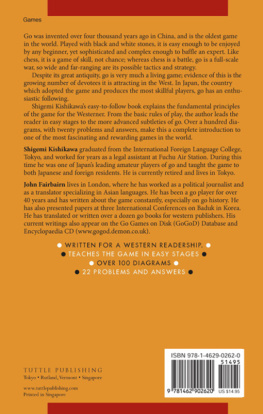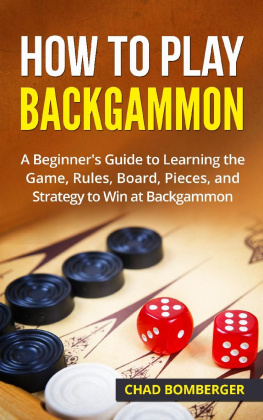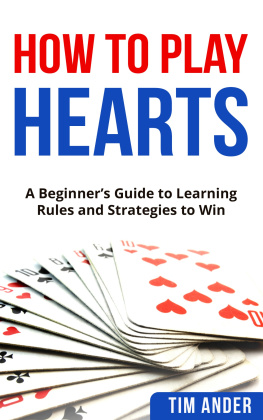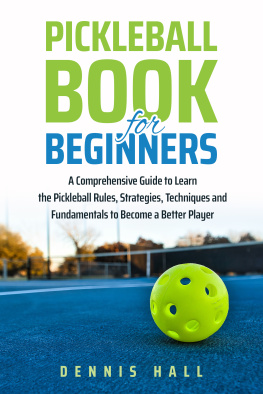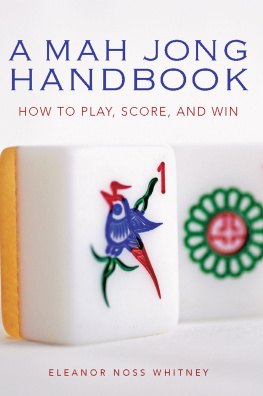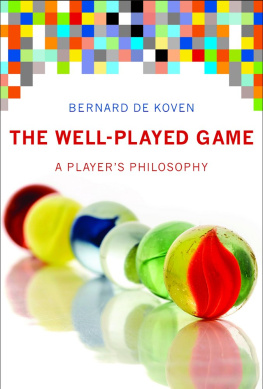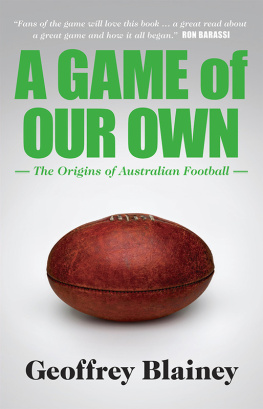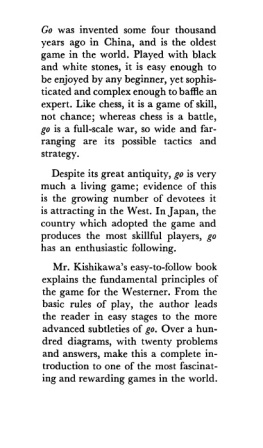
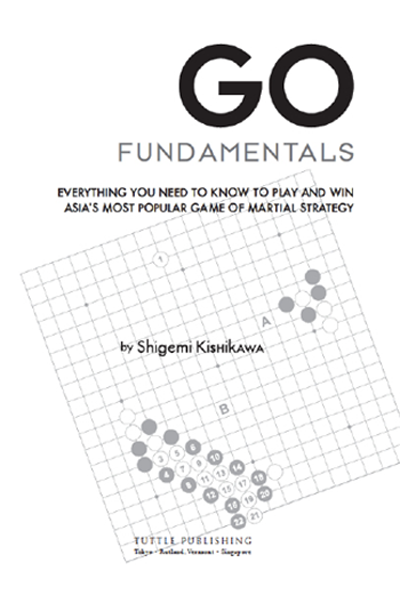
Published by Tuttle Publishing, an imprint of Periplus Editions (HK) Ltd., with editorial offices at 364 Innovation Drive, North Clarendon, Vermont 05759 U.S.A.
Copyright 2009 Periplus Editions (HK) Ltd.
All rights reserved. No part of this publication may be reproduced or utilized in any form or by any means, electronic or mechanical, including photocopying, recording, or by any information storage and retrieval system, without prior written permission from the publisher.
Library of Congress Cataloging-in-Publication Data
Kishikawa, Shigemi.
Go fundamentals / by Shigemi Kishikawa.
p. cm.
ISBN 978-4-8053-1070-0 (pbk.)
1. Go (Game) I. Title.
GV1459.5.K56 2009
794.4--dc22
2009013580
ISBN 978-1-4629-0262-0
Distributed by
North America, Latin America & Europe
Tuttle Publishing
364 Innovation Drive
North Clarendon, VT 05759-9436 U.S.A.
Tel: 1 (802) 773-8930; Fax: 1 (802) 773-6993
info@tuttlepublishing.com
www.tuttlepublishing.com
Japan
Tuttle Publishing
Yaekari Building, 3rd Floor
5-4-12 Osaki, Shinagawa-ku
Tokyo 141 0032
Tel: (81) 3 5437-0171; Fax: (81) 3 5437-0755
tuttle-sales@gol.com
Asia Pacific
Berkeley Books Pte. Ltd.
61 Tai Seng Avenue #02-12
Singapore 534167
Tel: (65) 6280-1330; Fax: (65) 6280-6290
inquiries@periplus.com.sg
www.periplus.com
13 12 11 10 09 6 5 4 3 2 1
Printed in Singapore
TUTTLE PUBLISHING is a registered trademark of Tuttle Publishing, a division of Periplus Editions (HK) Ltd.
Contents
Equipment
The Game
Territory
Connection and Disconnection
Capture
Life and Death
Illegal Plays
Seki Situation
Ko Situation
Basic Tactics
Playing the Game
Foreword
The first substantive knowledge of the Chinese game of go in the in the western world dates from 1687, when the young Chinese scholar Shen Fuzong explained the game to Thomas Hyde at the Bodleian Library in Oxford, England. Shen, brought to Europe by a Jesuit missionary, had already been paraded at the Versailles court where the Sun King Louis requested a demonstration of chopsticksbut on gold plates, naturally.
Although Hyde was alert to the merits of the game and wrote about it, he clearly had only a fuzzy grasp of it, and go caught on in Europe no more than did chopsticks.
It was not until the self-imposed isolation of Japan was breached by Commodore Perrys black ships in the mid 19th century and westerners began flocking there that its devotees learned enough to play an actual game and to teach others. Go had reached Japan from China over a thousand years before, and had been developed into its national game. A tiny handful of westerners even became tolerably proficient. The most notable was the chemist Oskar Korschelt, who studied at the school of the top player, Honinbo Shuho. He got to within a six-stone handicap of Shuho. On his return to Germany, Korschelt, who found exceptional pleasure in studying Shuhos openings, shared his delight on the game with his 1884 work Das Go-Spiel . In itself, this was probably the single most important work that introduced the game to the west, but it had added importance in that it was heavily used by Arthur Smith for his Game of Go . This latter work had the advantage of being in English and published (by Tuttle, be it noted) in the large market of America.
Smiths book was the one I learned from, also with exceptional pleasure. It is still a worthy book, but dated. It is not just that the references to players and openings are out of date, but that the rules are now a little different.
Despite all the merits of the Korschelt and Smith books, the plain fact was that in their heyday go was still a fringe activity in the west. There were a few clubs, but next to no materials for teaching beyond the beginner stage, and for most players just getting equipment to play on was a major problem. Many players of my generation, myself included, began by using makeshift boards with confectionary or drawing pins for the pieces.
The transition to the modern position of the game, where go is played widely outside the Far East, with a massive number of clubs and tournaments, well over 200 non-beginner books in English and a profusion of cheap equipment, did not begin until around 1960.
The first edition of this book, then called Stepping Stones to Go , was an important part of that movement.
Buoyed up by its peoples spectacular post-war economic recovery, the Japanese government began a concerted campaign of garnering goodwill overseas. Go was part of the drive. The go professionals organisation, the Nihon Ki-in, was encouraged to start a magazine in English, to send professionals abroad to teach, and to hold international tournaments for amateurs. Many Japanese amateurs such as Kishikawa also made strenuous efforts to share their beloved game with new western friends.
The movement was so successful that nowadays go is no longer seen as a strange game in the west. Figures are loosely bandied around but the most conservative claim is that there are about 27 million regular players in the world with about 5 million of those outside the Far East. Around 60 countries participate in the World Amateur Championship that has been held annually in Japan since 1979 (there were sporadic events before that), and over 600 players, professional and amateur, played go in the first World Mind Sports Games, held in conjunction with the Olympics in Beijing in 2008.
The Japanese governments efforts to foster go were not limited to the west. Top players from China, Taiwan, and Korea were allowed to become professionals in Japan, and there were also high-level goodwill exchanges, especially in China where the game had languished somewhat throughout the upheavals of the 20th century. Naturally, the aim was to promote international relations rather than the game, but here too success was great. Even in the last few months of when I write, while politicians and newspapers talked of stalled arms talks with evil North Korea, ordinary North Koreans were mixing with go players of other nations in the WMSG and events in Japan. Proof yet again that even if chess is a game of war, go is a game of co-existence.
To a degree it could be said that the Japanese drive was too successful. At least, the top players in the world are now considered to be Korean (for example, Lee Changho and Lee Sedol), or Chinese (Gu Li and Chang Hao). A further characteristic has been the extreme youth of the Korean and Chinese players. Lee Changho (born in 1975) won his first world championship at the age of 16.
But in many ways go remains stronger in Japan than elsewhere. There is more money in go there, more professionals, more events, more books, more magazines. And although official efforts to spread the game overseas have eased off, it is the long-running Japanese manga (comic) Hikaru no Go which has brought in a massive new generation of young people into the game in recent years in both east and west.
What I am driving at is that, despite the prominence of Korean and Chinese players at the top, much of go in the west still bears the stamp of Japanese influence, both historical and modern. It is still a good idea to learn from a book by a Japanese author.
The rules that most western people are familiar with are Japanese. (Chinese rules differ slightly but Korean rules are the same as Japanese). Japanese terms such as ko, joseki, fuseki, aji, and hane are in wide use among western players, whereas no Chinese or Korean terms have made the grade
Next page
